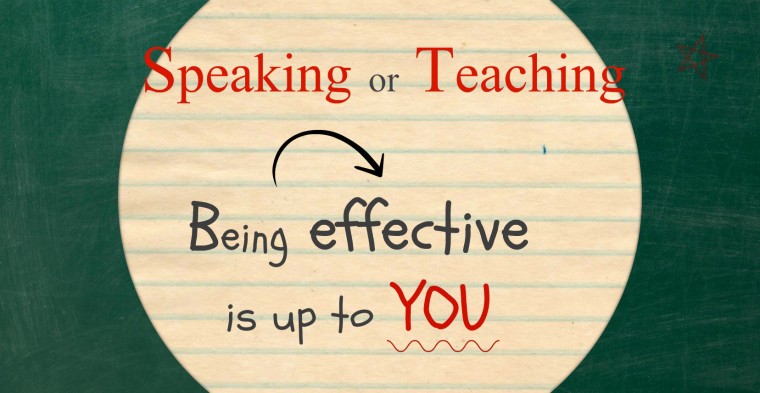
Designing and teaching effective lessons takes skill and expertise. I don’t care if it is for adults or for children, there are certain constructs and principles that comprise a well developed and well executed lesson. Teachers or leaders who do not learn how to command the attention of a listening audience will be talking over the din. Those who are not prepared well, who don’t take in to account various learning styles and mediums of presentation, will flounder as well.
I have been teaching in some capacity or other for most of my adult life. Teaching large groups is part of what I do and will probably always do. What will be shared here is a hodge-podge of effective tools I use when teaching or speaking in front of a group of children or adults. This post has no spiritual overtones but I must say, to be fair, that I would add the word prayer to each one of these strategies if I were to do so.
1. Effective Leading:
Mission: Know what your mission is before you organize and prepare your lesson. Everything branches out from the mission statement–why you are doing what you are going to do.
Focus: Focus on your group, their age, gender, background, and interests. Each lesson will be prepared for this group’s dynamics and what you wish to teach them.
Preparation: Know your material well. Document resources. Prepare well.
2. Effective Structures:
Organization: Explain the expectation
– The better prepared you are, the better the outcome. Organization is your best friend. Teach routines.
– Project the expected outcome. Prepare lessons in advance. Execute and deliver.
– Use a silent signal to indicate when the class or audience is to resume order. Don’t try to talk over others. This is ineffective and useless, and you are teaching them to not listen to you until you raise your voice.
Implementation: Teach your students to listen, whether adult or children
-Redirect when necessary. Body language and clear expectations are shown and appropriate responses come with a leader’s sense of projected authority. Vocal tone and posture and way of dress communicate one’s authority or lack thereof.
-Uncertainty comes across as weakness, lack of command or as ill prepared. It is important to be mentally prepared as well. Be on the offense not defense. (I once had a 300 pound belligerent student tell me I was weak, and he swore at me. . . that was not a good day. Yikes!)
3. Effective Lessons:
Purpose | Knowledge gained: Lesson objective
– Know what concept you are teaching, how you are going to teach it, and what you want your audience or students to learn.
– Include review tie-ins to access prior knowledge when you teach a series of lessons.
– Include personal application, applicable to their lives. Let them articulate this back to you.
Parameters | Behavior expectations — for children
– Children need to know the behavior expectation in advance of the lesson.
– Children need to know the appropriate behavior i.e. physical bodies, hands and feet, when to talk etc.
– Adjust trouble spots beforehand without drawing attention to personalities. Move children apart who will cause distractions when together. Do it deftly and without put-downs.
“Hook” | Prior knowledge — Begin the lesson with an attention-getter
– Have a good opener to make them think.
– Draw on past and present experiences to blend with knowledge to be gained
– Involve students in the learning. Learning solidifies through interactions.
Modalities | Learning styles — Adapt the presentation for different learning styles
– Include visual, audio, and physical response. These are must-haves.
– Include graphics, movement, illustrations, vocal or music adaptations.
Avoid | Diminish — Wasting time with meaningless clutter or verbal exchanges
– Avoid arguing them down. It doesn’t work. Do not be drawn into a verbal sparring match. Have a prepared way to exit these sorts of exchanges. Some people are intent on “winning” or baiting the speaker.
– With children, I give them a choice, one is positive (listen and be quiet) and one is negative (removed from a favorite activity for the day). They choose their outcome. This avoids an ugly confrontation and from causing discomfort to others.
– With adults, I say to them that we must return to the concept being presented, get back on subject, but I would be glad to discuss this with them after the session concludes. It is easy to lose control of a meeting.
– Avoid dead time. Dead time is your enemy. Your audience will lose focus and lose interest, and you seem (or are) ill prepared or inefficient. Also avoid bird walking.
– Avoid distractions. Minimize distractions by using your time wisely and efficiently. Keep outside influences to a minimum i.e. loud noises, and inside influences i.e. discomfort…room temperature, poor seating arrangements, lack of lighting, ventilation, or materials. It helps to have a few tricks up your sleeve to keep the group interested (a quick reward etc.). Employ these when needed.
– Children and adults can learn to ignore a child who has distractible behaviors. The distractible child can learn to monitor their own behavior and have an alternative i.e. special seating spot or S’cool Moves, a series of quiet physical activities students can do on their own at the back of the room and then return to the group. Some children need a physical outlet every so often.
Plan Themes and Thematic units: Length of duration is important
– Plan in advance. Modify and add-to and adjust for appropriate emphasis.
– Incorporate appropriate resource materials and activities.
Teach to the big picture: Illustrate how this applies to real life
– Have high expectations. This isn’t to entertain. Your purpose is to inform (back to your mission).
– Don’t waste an opportunity. Make each lesson count.
– Adults and children will surprise you. They get excited about lessons that apply and resonate.
– Relate to their world and experiences. Expand on knowledge. Challenge your audience.
Participation: Involve the audience
– Avoid “down time” and over-vocal participants who can hijack the lesson.
Apply lesson to world and local situations: Make the lesson applicable to today
– Relate it to problems and concerns, positives and negatives.
– Search and discover solutions and proactive means for addressing issues
Apply to life: Application is the richest part of the lesson
– Make it real. If it’s not real to you, it won’t be real to them.
– Give examples from your life or from real life. Have them give examples.
6. Effective Environment:
Be creative, flexible and real: Make your lessons something to anticipate
– Try different methods and activities.
Model behaviors: Be positive and avoid negativity
– Don’t scold or demean. Ever.
– See your audience as a vessel you are pouring into with a life-giving substance. You have something they need, and you want them to grasp it and take it to the next level.
Be sincere, affirming, and fair: Treat each as worthy
– Do not have favorites. Look for the quiet person, draw them out with effective questioning, but do not embarrass.
– Look for good things to say to your audience or students and about them and their acquisition of knowledge etc..
– Remember, you model your own self-respect. Respect is key in every way. Sometimes you have to teach your audience what respect looks like so they ‘get it.’
Respect is key. You have to teach what respect looks like. tweet this






I reserve the right to delete comments that are offensive or off-topic.